Best Japanese Tutors in Aomori | Private Lessons & Online Classes
Looking for private Japanese lessons in Aomori?
HH JapaNeeds offers personalized one-on-one lessons, available both online and in person. Start your journey to mastering Japanese today!
Sign up now and get a free e-learning course!

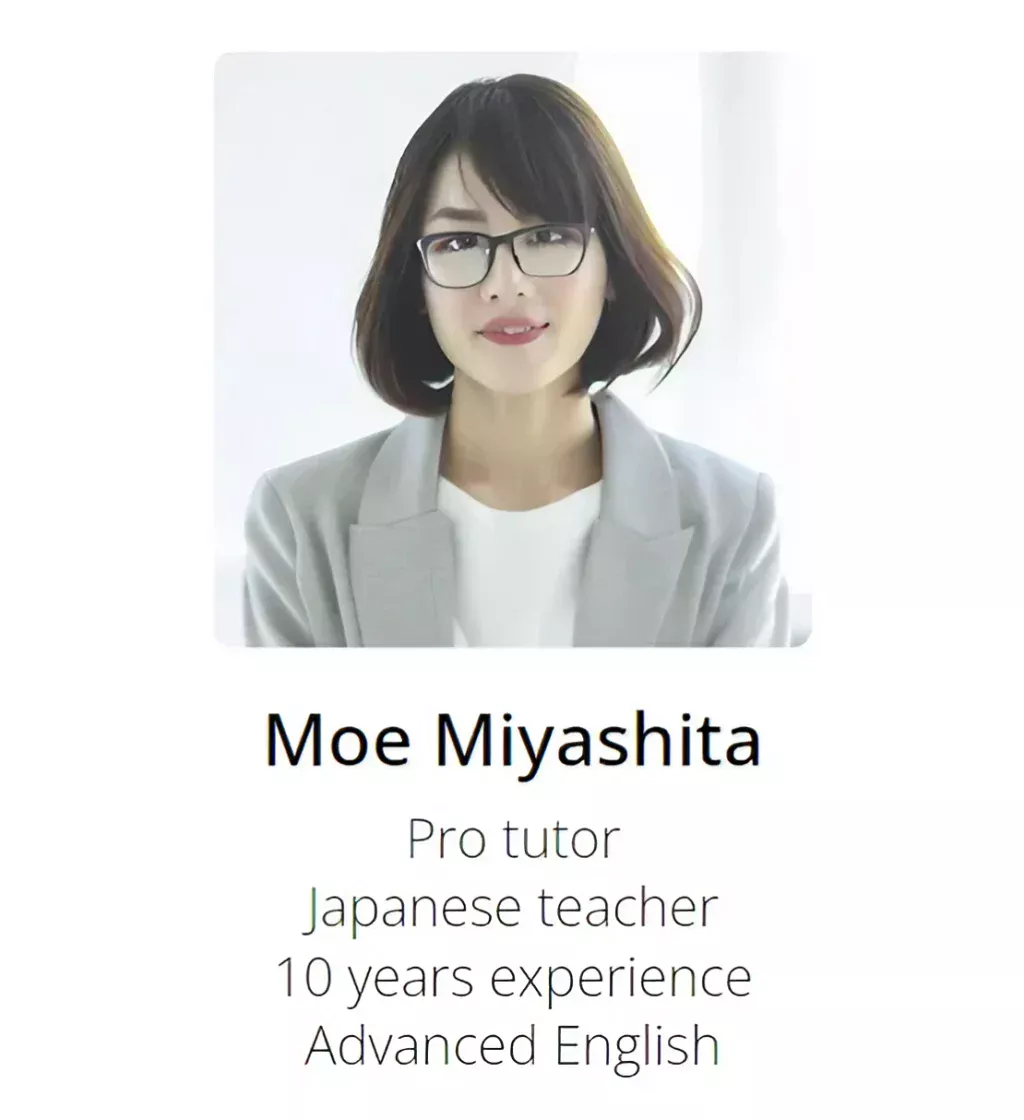
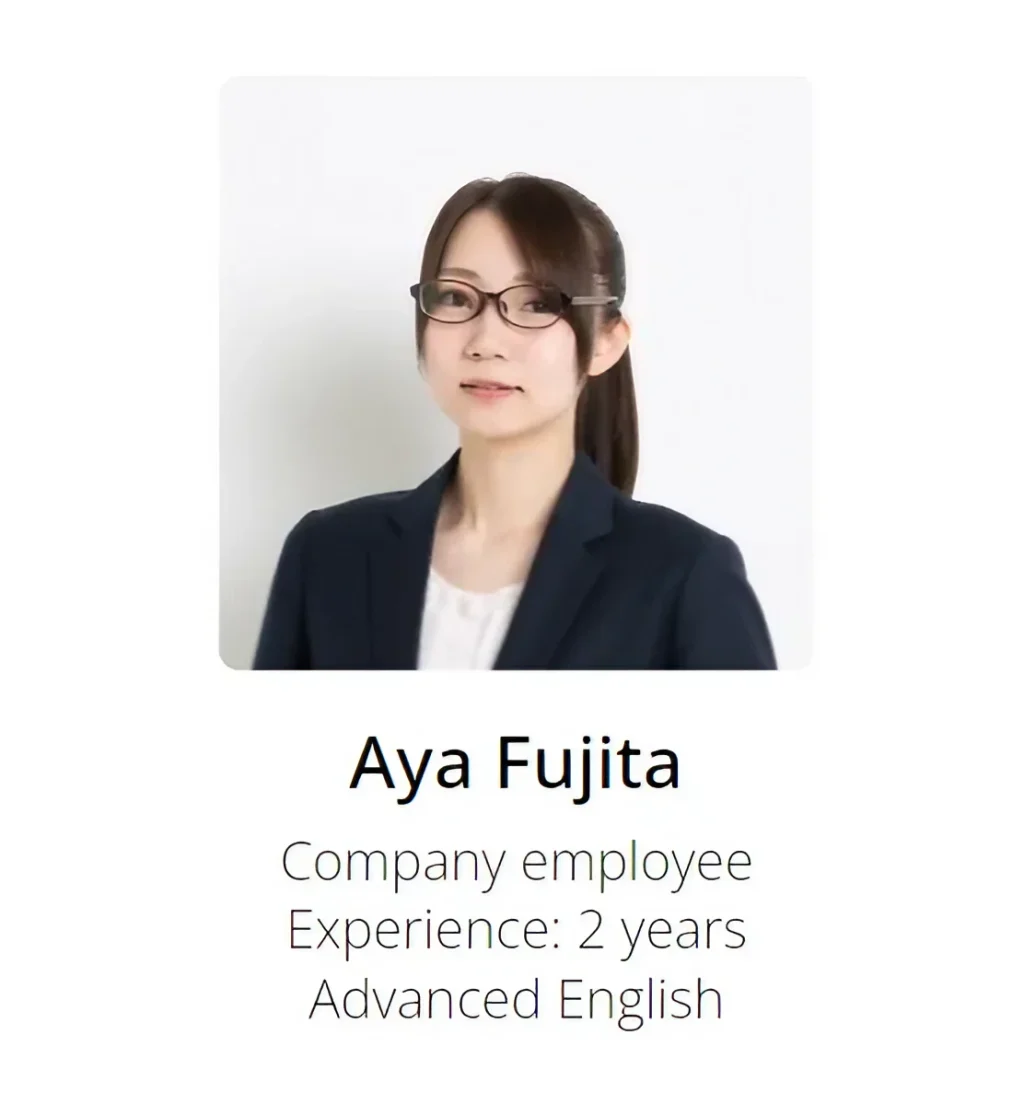
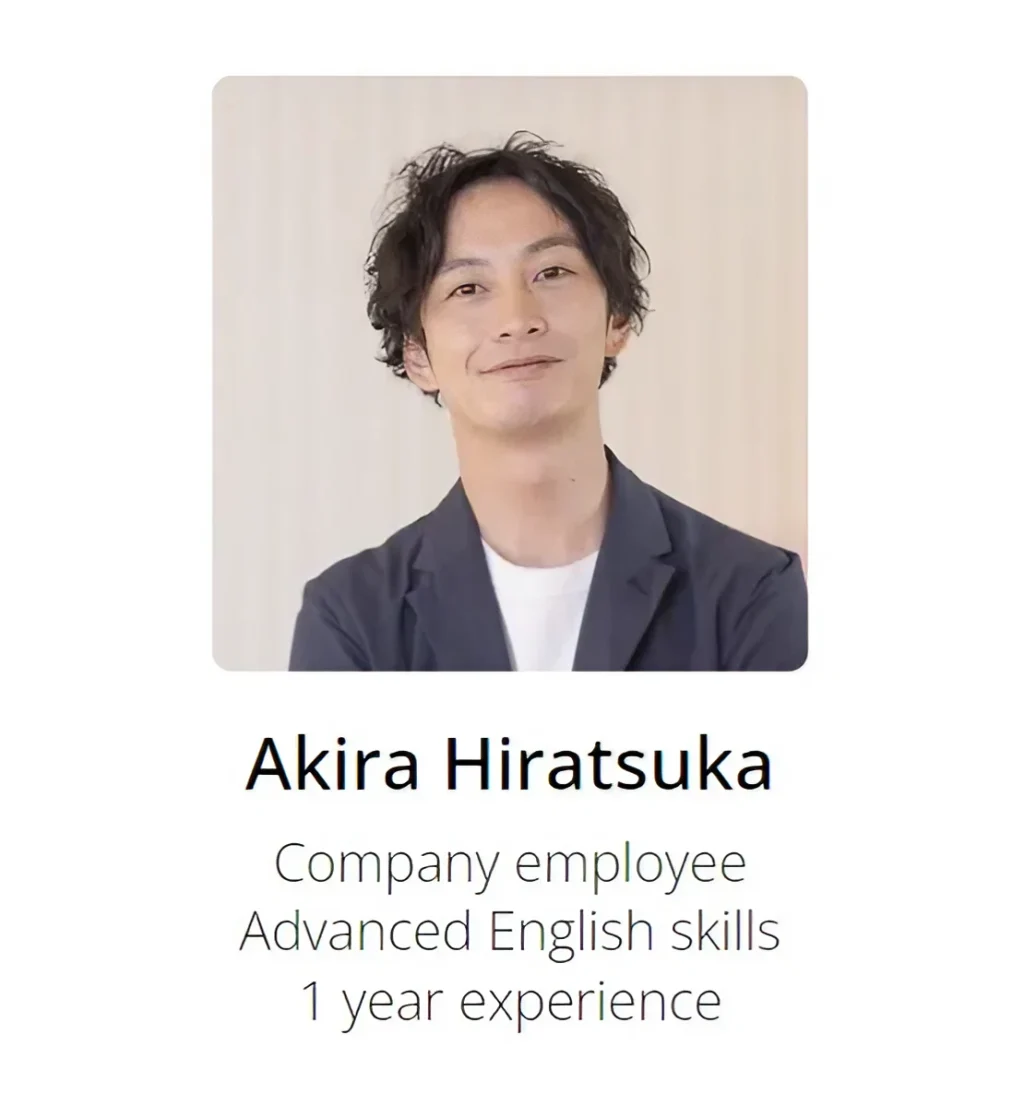
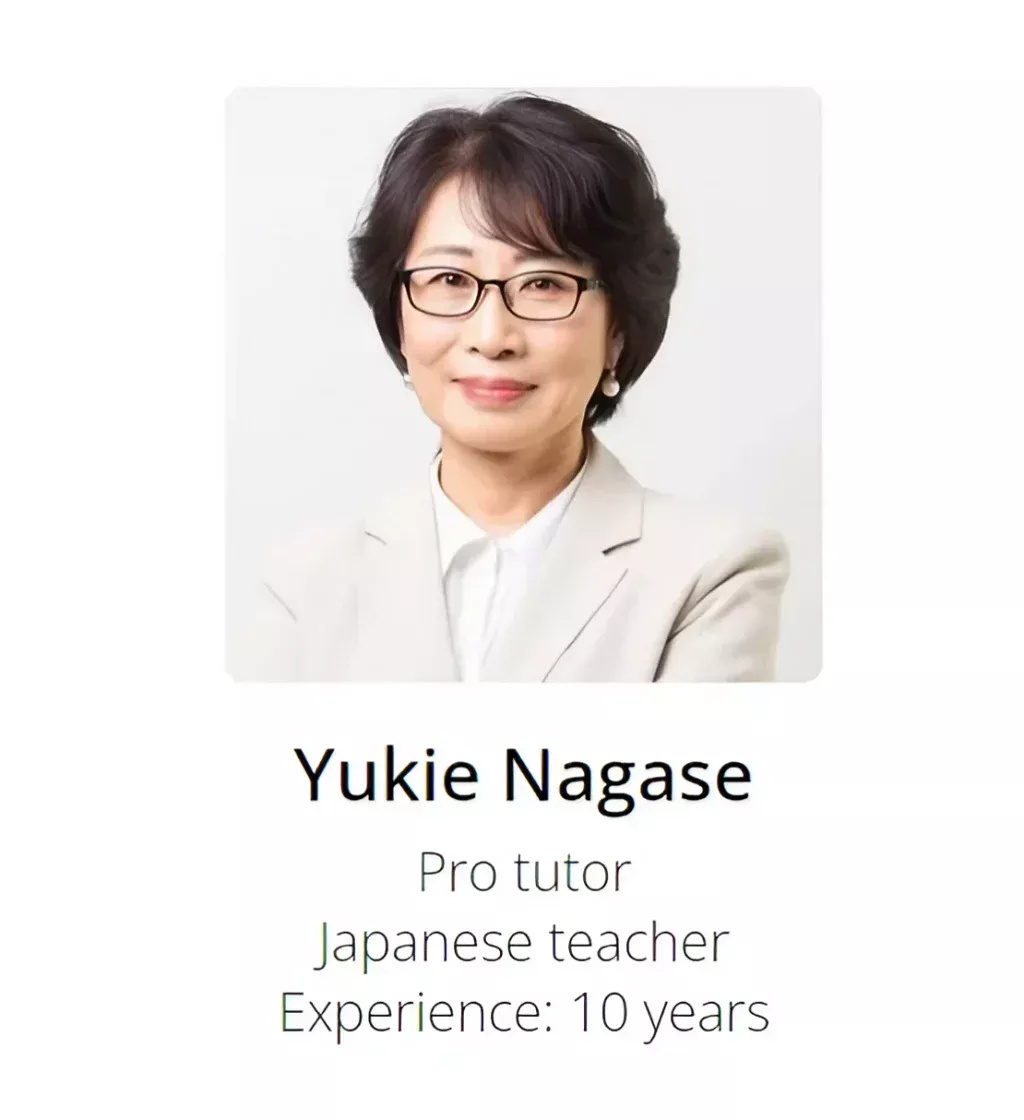
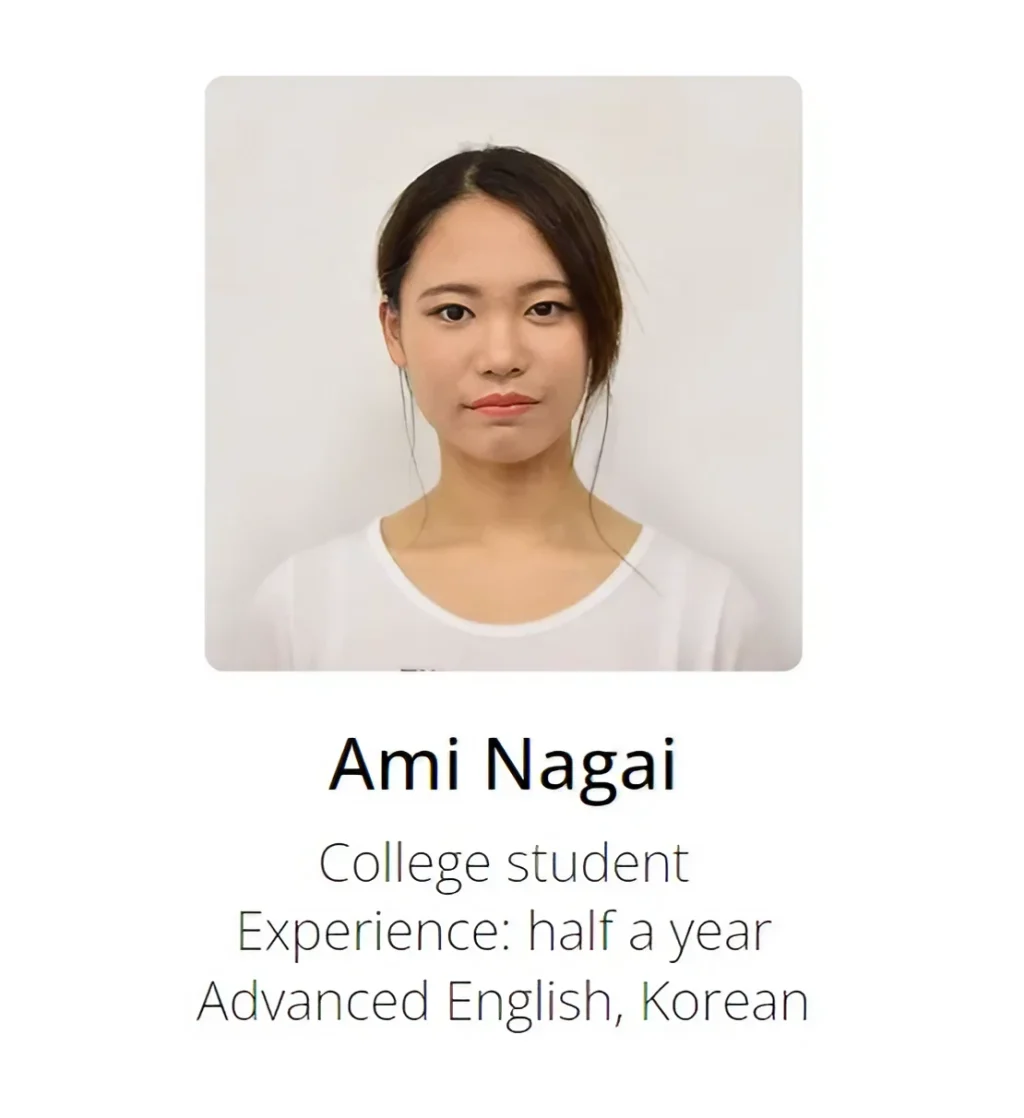
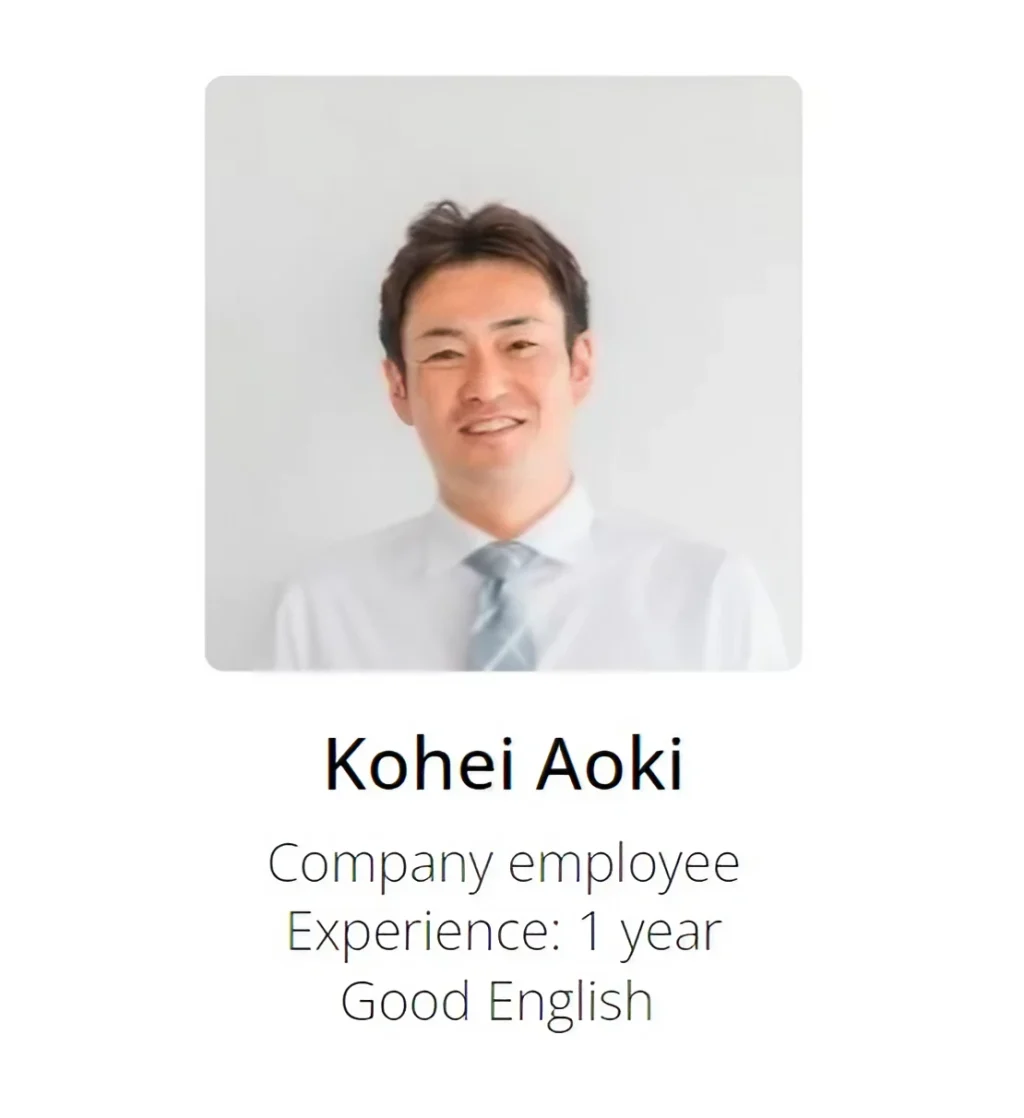
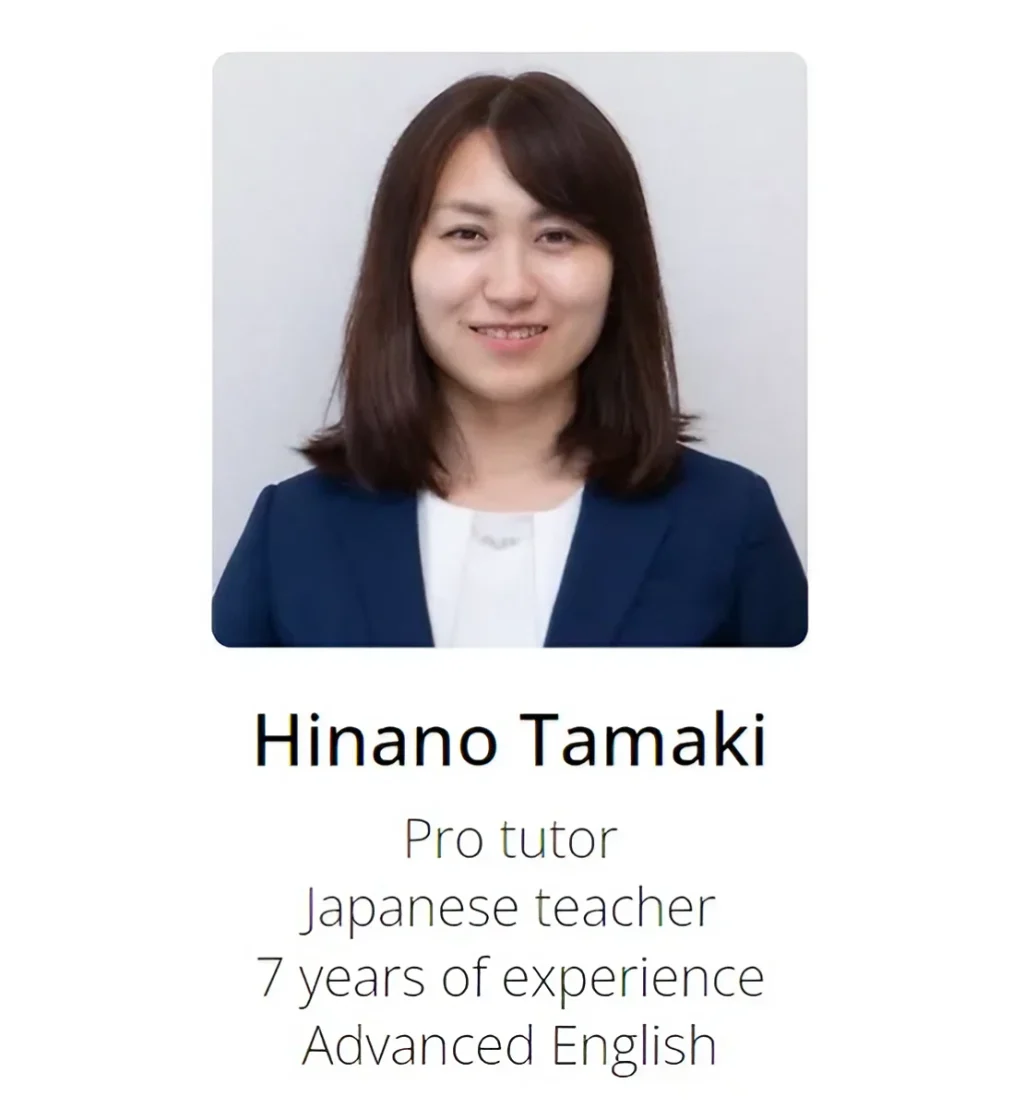
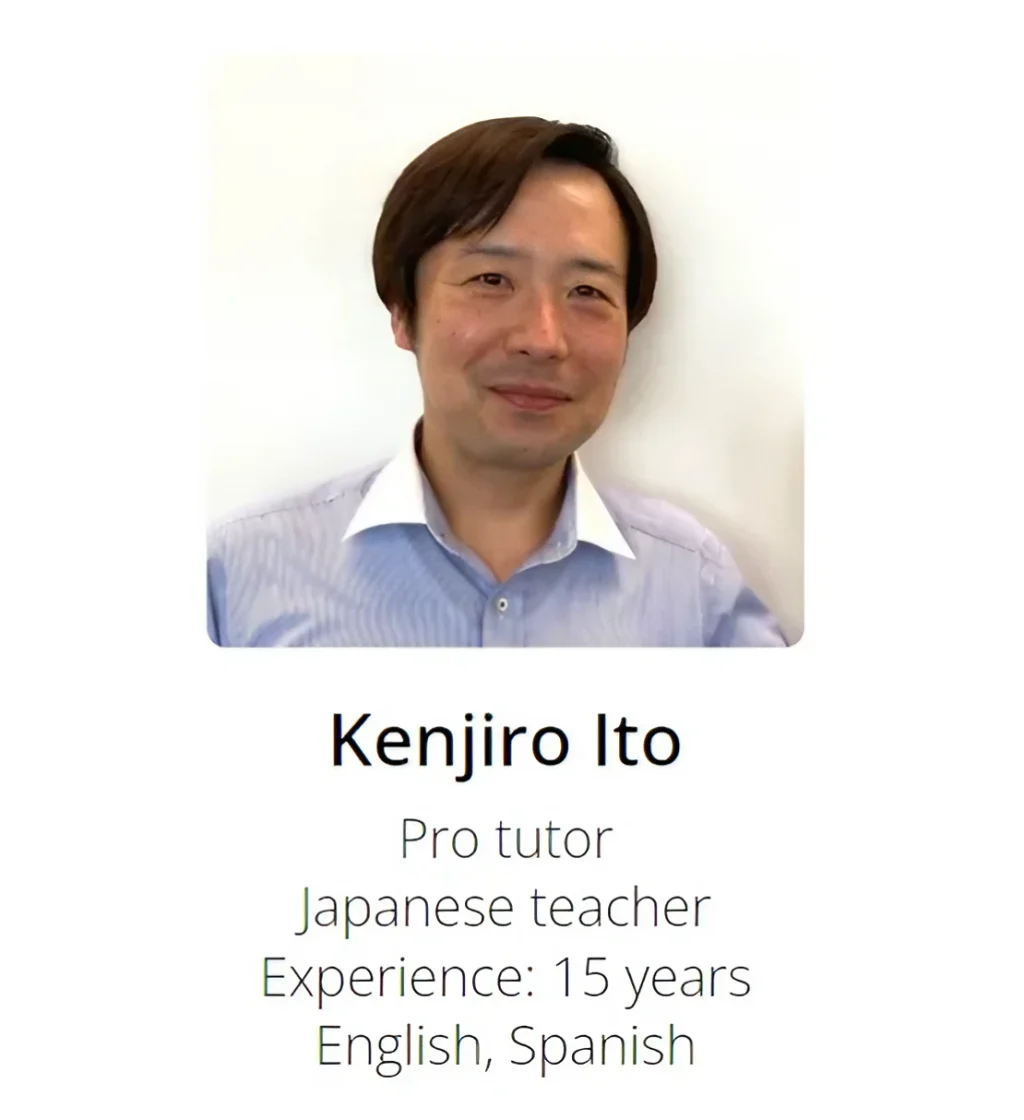
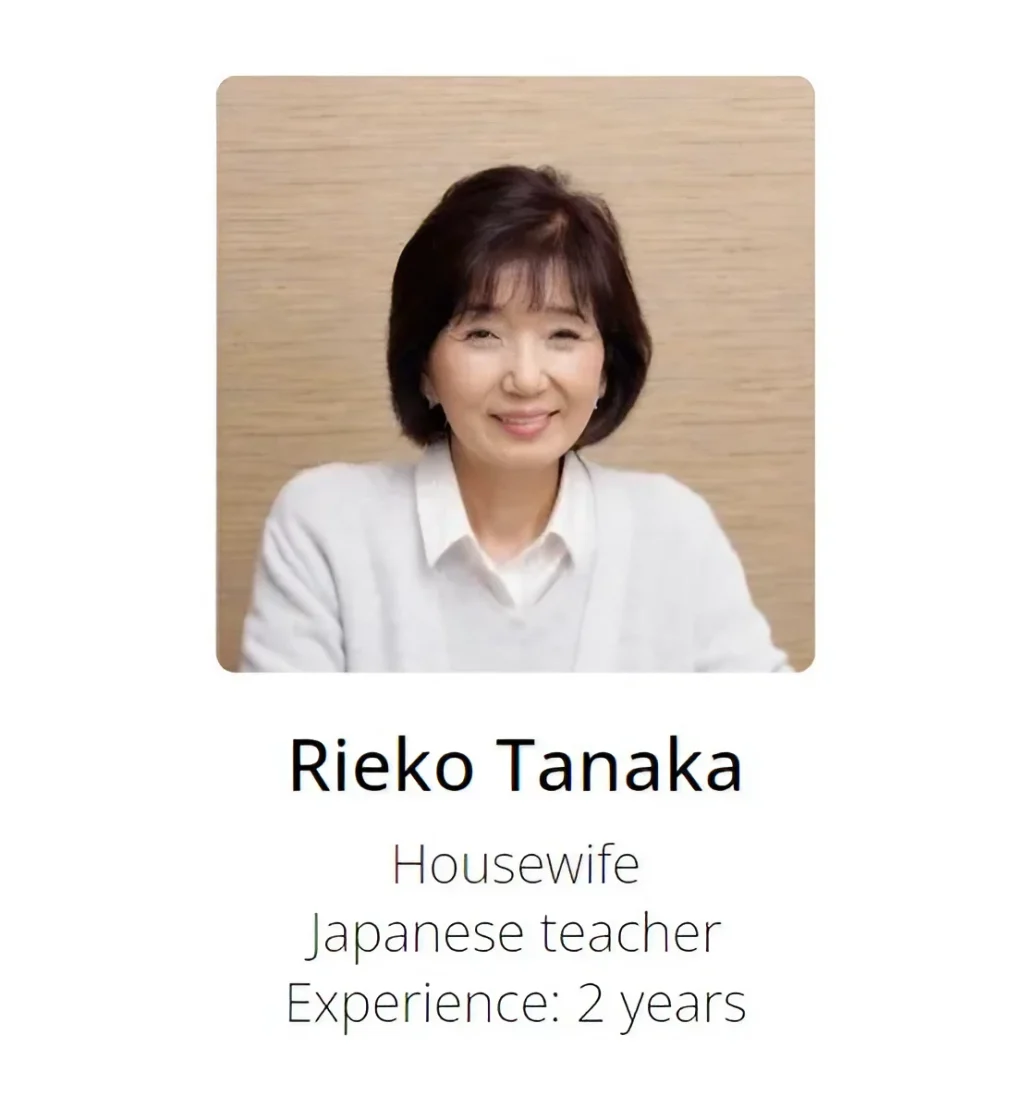
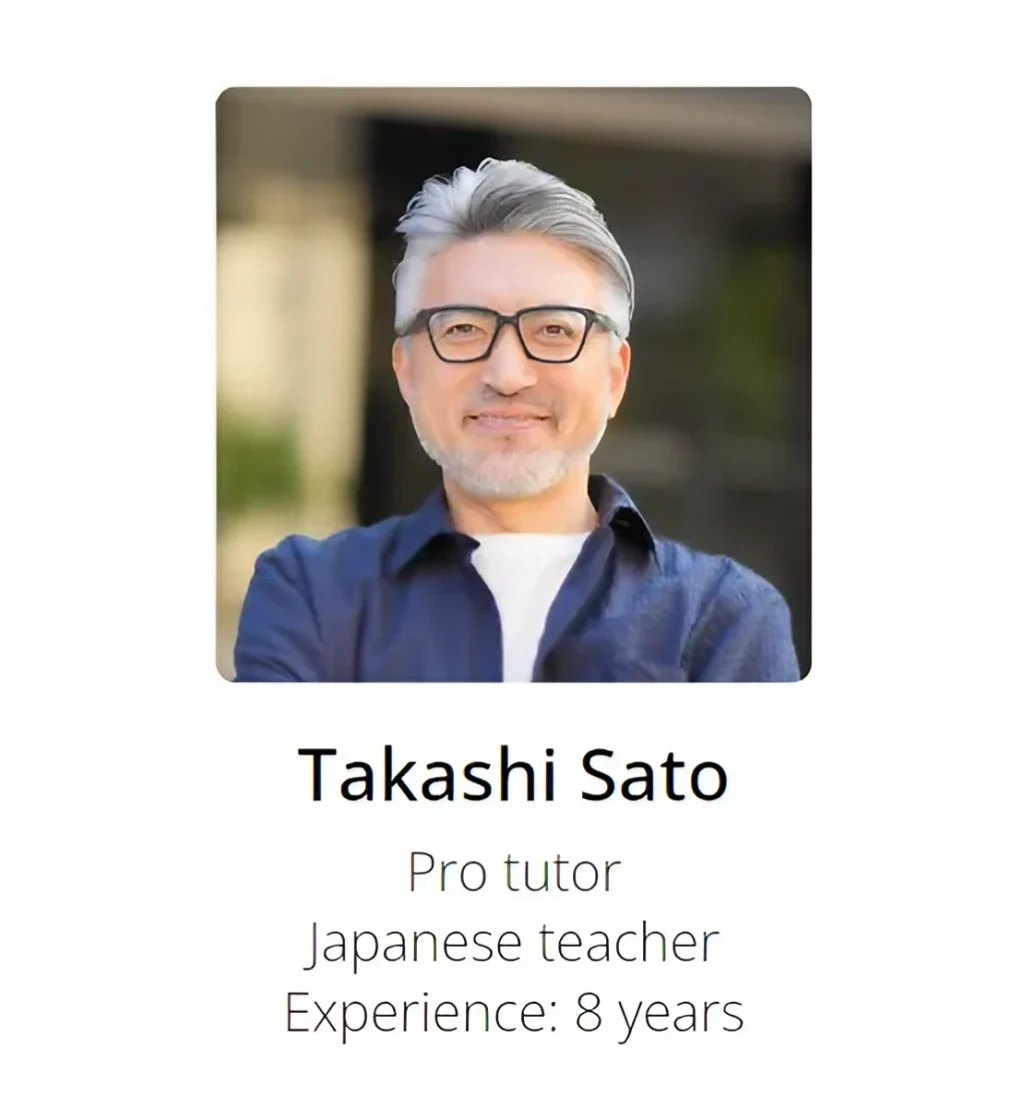
- Perfect Match with Optimized Matching Technology (OMT)
Sign up and let us match you with your ideal tutor from over 11 experienced teachers in Aomori. - Unlimited Free Trial Lessons
Try as many trial lessons as you need to find the perfect tutor for you. - Sign-Up Bonus: Free E-Learning Course
Get access to our comprehensive online course when you join.
Why Choose Us for Japanese Tutoring?

Personalized Tutoring
One-on-one Japanese lessons tailored to your goals.

Affordable Pricing
Learn Japanese affordably with secure online payments.

Ultimate Flexibility
Schedule lessons anytime, anywhere—choose in-person or online.
Flexible Japanese Lesson Formats

In-person Lessons
Learn Japanese face-to-face with our tutors at your preferred location—whether it's a nearby café, your home, a community center, or your office.

Online Lessons
Connect with tutors online and learn Japanese from anywhere in the world.

Hybrid Learning
Combine in-person and online sessions for flexible, personalized Japanese lessons.
e-learning Course: Free
Partner Class(in-person or online): 1300 yen/hr
Pro Class(online): 4600 yen/hr
Pro Class(in-person): 6500 yen/hr
Discover the right plan for you!
Receive daily Japanese language materials and study tips.
Start Learning Today!
Available Japanese Lesson Types
Free Class

Access free Japanese lessons(e-Learning Course), including hiragana, grammar, JLPT levels (N5 to N1), and more. Ideal for self-paced learning.
Beginner Class

Perfect for newcomers to Japanese, this course covers essential language skills to build a strong foundation.
Business Class

Master keigo (honorific expressions), email etiquette, and workplace communication for career advancement.
JLPT Class

Achieve your JLPT goals (N5 to N1) with targeted lessons and tailored study resources to fit your level.
Student Success Stories in Aomori
Join over 5,000 satisfied students who have mastered Japanese with our expert tutors.





Thanks to their guidance, I was able to make significant progress in understanding and speaking Japanese. I highly recommend their classes to anyone looking to learn the language, whether as a beginner or for more advanced levels.
Thank you my best first teacher in Japan
Because I am Arabic Language teacher I understand deeply how every word is important to build good understanding for Japanese Language.
I also I enjoy learning grammar idioms it is very helpfull to me so I try to memorize it.
Thank you very much
Thank you for arranging this.
He got me a tutor which is able to accommodate my schedule. The tutor is very patient when i tried to used poor Japanese to communicate with her. She tried to understand and correct my Japanese. It been a few months taking the classes and I am happy. The tutor always makes an effort to plan a lesson plan before the class which I am really grateful for it.
I would highly recommend them to embarks a language endeavours together!
I would love to continue learning Japanese classes with them.
Thank you Honda san and teams!
If you want to study Japanese with Japanese people, please try this class. 🤔
Introduction:
I recently had the opportunity to explore the world of Japanese e-Learning, and I must say, it has been an incredible experience. As someone who has always been fascinated by Japanese culture and language, this platform provided me with a comprehensive and enjoyable way to learn Japanese. In this review, I would like to share my thoughts and impressions about the Japanese e-Learning program.
User-Friendly Interface:
One of the first things that impressed me about the Japanese e-Learning platform was its user-friendly interface. Navigating through the different lessons and modules was intuitive and straightforward. The layout was clean and visually appealing, making it easy to stay engaged and focused on the content. Whether you’re a beginner or an advanced learner, the platform caters to all levels of proficiency, ensuring a seamless learning experience.
Comprehensive Curriculum:
The Japanese e-Learning program boasts a comprehensive curriculum that covers all aspects of the Japanese language. From basic vocabulary and grammar to reading, writing, and conversation practice, the course content is well-structured and thoughtfully organized. Each lesson builds upon the previous one, gradually increasing the complexity and difficulty level. The inclusion of interactive exercises, quizzes, and assessments helped me consolidate my knowledge and track my progress effectively.
Engaging Multimedia Resources:
What truly sets Japanese e-Learning apart is its extensive use of engaging multimedia resources. The incorporation of audio clips, videos, and interactive exercises made the learning process immersive and enjoyable. I particularly appreciated the authentic Japanese materials, such as dialogues, songs, and cultural snippets, which provided a glimpse into real-life situations and enhanced my understanding of the language in context.
Supportive Community:
Another aspect that I found invaluable was the supportive community within the Japanese e-Learning platform. The inclusion of discussion forums, chat groups, and live sessions allowed me to connect with fellow learners and native speakers. This not only provided an opportunity to practice my speaking and writing skills but also fostered a sense of belonging and motivation. The instructors and moderators were responsive and helpful, offering guidance and feedback whenever needed.
Flexibility and Accessibility:
Japanese e-Learning recognizes the importance of flexibility and accessibility in today’s fast-paced world. The platform is accessible across various devices, including smartphones and tablets, enabling me to learn on the go. The self-paced nature of the course allowed me to tailor my learning schedule to fit my personal commitments. Whether you have a few minutes or several hours to spare, you can easily dive into the lessons and make progress at your own pace.
Conclusion:
In conclusion, my experience with Japanese e-Learning has been nothing short of exceptional. It provides a comprehensive curriculum, an engaging learning environment, and a supportive community that caters to learners of all levels. If you’re looking to embark on a journey to learn Japanese from the comfort of your own home, I highly recommend giving Japanese e-Learning a try. It’s an investment that will undoubtedly reward you with a deeper understanding and appreciation of the Japanese language and culture.
With the enthusiastic help and support of Japanese teachers, I was able to learn Japanese for free
This has helped me a lot in work and daily life
I feel grateful to HH JapaNeeds center and thank 本田さん
I would definitely contact them if you’re looking for more casual assistance or support in your Japanese language endeavours 🙂
Helping Hand has definitely helped me a lot.
Also, the headmaster of HH JapaNeeds, Naoteru-san, he is very helpful in arranging the right tutor for me.
I strongly recommend those who want to learn Japanese language to try out HH JapaNeeds service, you won’t be regret here!
How to Start Learning Japanese with HH JapaNeeds
Apply
Share your learning goals and preferences, and we’ll arrange the perfect Japanese tutor for you.

Match
Enjoy a free trial lesson. Find the perfect match before committing.
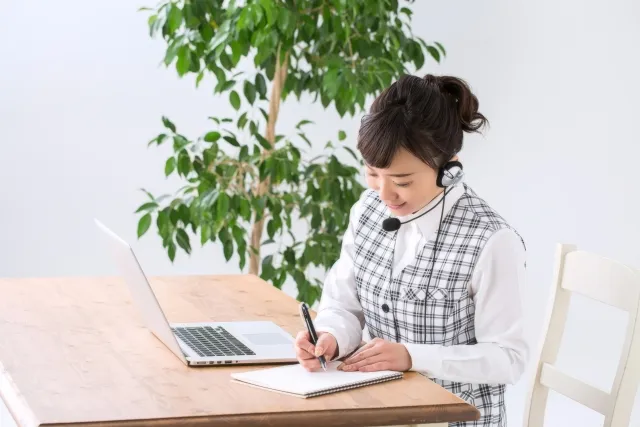
Master
Begin your personalized Japanese lessons. Change tutors anytime to ensure the best learning experience.

Discover how HH JapaNeeds supports your Japanese learning journey.
Start your free trial today and receive a bonus e-learning course!
Flexible Learning Locations
Learn Japanese at Your Preferred Location
Choose a location that suits your lifestyle and schedule:
- Your Home or Office: Enjoy private lessons in the comfort of your own space.
- Community Centers: Engage in a learning-friendly environment near you.
- Cafes in Aomori city: Combine your lessons with a relaxing atmosphere. Our tutors can meet you near major stations such as Aomori Station, Shin-Aomori Station, and Higashi-Aomori Station, or at popular cafés like Starbucks Aomori Station Front, Komeda’s Coffee Aomori Chuo Branch, or Doutor Coffee inside Aomori Station.
- Online Anywhere: Learn from professional Japanese teachers without leaving your home.
📍 Example Location: 134-2 Arakawa Fujito, Aomori-shi, Aomori-ken 030-0111
Japanese Language Schools and Classes in Aomori
Aomori offers a unique blend of cultural richness and educational opportunities, making it an ideal place to learn Japanese. Whether you’re seeking a Japanese class near me, a qualified tutor, or online lessons, Aomori provides various options to meet your language learning goals.
Affordable Private Japanese Tutors at HH JapaNeeds
HH JapaNeeds offers private Japanese lessons tailored to your pace and goals. Our experienced tutors provide in-person lessons in Aomori areas like Aomori City, Hirosaki, and Hachinohe, as well as flexible online classes. From JLPT prep to daily conversation, we match you with the right teacher for effective and enjoyable learning.
Other Language Schools in Aomori
- Aomori Nihongo Gakuen
A comprehensive Japanese language school offering courses from beginner to advanced levels, focusing on both language proficiency and cultural understanding.
📍 Location: Aomori City
💡 Tip: Ideal for students aiming for university admission or professional advancement in Japan. - Aomori International Exchange Association
Offers community-based Japanese classes and cultural exchange programs, fostering mutual understanding between locals and foreigners.
📍 Location: Aomori City
💡 Tip: Great for learners seeking a supportive environment with opportunities for cultural immersion.
Advantages of Studying Japanese in Aomori
Connect with Local Culture
Aomori, in the heart of northern Japan’s Tōhoku region, offers endless opportunities to learn Japanese while experiencing local culture firsthand. Visit the Nebuta Museum WA RASSE to see massive festival floats and even try haneto dance moves (Nebuta Museum WA RASSE). Joining a Japanese class—whether a private lesson or online—with a local tutor allows you to practice language skills near me while exploring these cultural landmarks.
💡 Example: Practice conversational Japanese during a lesson after exploring Nebuta floats or walking through the Jōmon village with your teacher.
Unlock Business Opportunities
Aomori’s economy thrives on agriculture (especially apples and rice), cultural tourism, and local craftsmanship. A business-focused Japanese class—online or private—can help you communicate effectively with museum staff, festival organizers, apple growers, or tourism professionals. Consider taking a lesson near A‑FACTORY, Aomori’s popular waterfront market and regional specialty hub (A‑FACTORY).
💡 Pro Tip: Enroll in a class close to Aomori Station to build professional Japanese skills for careers in agritourism, hospitality, and cultural industries.
Frequently Asked Questions about Japanese Tutoring in Aomori
Q: What makes HH JapaNeeds different from other Japanese language schools in Aomori?
A: HH JapaNeeds specializes in one-on-one private lessons, offering both online and in-person options tailored to your goals and schedule. We use a unique matching system to ensure you are paired with the ideal tutor in Aomori. With over 5,000 registered tutors across Japan, we consider your preferences for teaching style, bilingual ability, experience, age, gender, schedule, location, and lesson content to create the perfect match quickly and efficiently.
Unlike automated platforms like Preply, italki, and AmazingTalker, where students must navigate a large pool of tutors on their own, HH JapaNeeds provides a hands-on, personalized experience. Our experienced coordinators guide you through every step, saving you time and frustration. If your tutor isn’t the right fit, we offer unlimited flexibility to change tutors until you find the perfect match. Your satisfaction is our priority.
Another key advantage of HH JapaNeeds is the dedication and focus of our tutors. Unlike platforms where tutors juggle multiple students randomly, our tutors are exclusively assigned to you. This allows them to fully understand your progress, challenges, and objectives, crafting lessons that are highly personalized and effective.
With HH JapaNeeds, your learning journey is not only supported by expert tutors but also empowered by our state-of-the-art matching system and unparalleled coordinator support. Whether you’re preparing for the JLPT, enhancing your business Japanese, or mastering conversational skills, our team is committed to your success.
Take the first step today with a free trial lesson, and experience the difference of tailored Japanese learning supported by the best matching technology and dedicated professionals!
Q: Where can I take in-person lessons in Aomori?
At HH JapaNeeds, we offer two flexible styles of Japanese lessons in Aomori to suit your learning preferences and lifestyle: Partner Class and Pro Class.
🔵 Partner Class – Learn at Cafés & Public Spaces
Enjoy private Japanese lessons in relaxed environments such as cafés, libraries, and other public locations. Our tutors can meet you near major stations and popular gathering spots.
We offer lessons in popular areas including:
-
Aomori Station, Shin-Aomori Station, and Hirosaki Station
-
Cafés like Starbucks Aomori Station, Doutor Coffee near Aomori Bay, and Tully’s Coffee in Hirosaki City
-
Libraries and spaces like Aomori Prefectural Library and Hirosaki City Library
-
Parks such as Gappo Park and Hirosaki Park
🟢 Pro Class – Learn at Home, Office, or Any Preferred Location
In the Pro Class, our certified Japanese teachers will come to your preferred location near you for personalized one-on-one lessons. This includes your home, office, or favorite coworking space, hotel lounge, or café.
We cover all areas of Aomori, including:
-
Residential neighborhoods like Hamamachi, Yasukata, and Okidate
-
Business districts near Aomori Station and Shin-Aomori Station
-
Educational institutions such as Hirosaki University and Aomori Public University
Whether you’re a working professional in a high-rise office or a family living in a quiet neighborhood, we will match you with a professional teacher who can meet you wherever it’s most convenient.
Q: Can I take online lessons if I live outside of Aomori?
A: Absolutely! HH JapaNeeds provides online lessons to students anywhere in Japan or around the world. Whether you are in Aomori or abroad, our experienced tutors will ensure you receive a tailored and effective learning experience.
Q: Can I switch between online and in-person lessons?
A: Yes, at HH JapaNeeds, we offer flexible learning options, allowing you to switch between online and in-person lessons to suit your needs. Whether you have travel plans, a busy schedule, or simply prefer a different learning environment, we can accommodate you. Please contact your instructor or our office to discuss scheduling and any potential adjustments.
Q: How much do private Japanese lessons cost at HH JapaNeeds?
A: We pride ourselves on offering affordable rates. Our pricing is based on the lesson type and tutor qualifications, but we guarantee competitive rates that are often lower than those of other Japanese schools in Aomori.
Q: Can I choose my tutor?
A: Yes, you can! HH JapaNeeds allows you to select from a variety of tutors, including bilingual teachers who speak English or other languages. We will match you with the ideal tutor based on your preferences and learning goals.
Q: Do you offer lessons for specific purposes, like business or JLPT preparation?
A: Yes, we provide a range of specialized courses, including:
- Beginner Japanese: Learn Students will learn basic vocabulary, grammar, and pronunciation, and can begin with simple daily conversation..
- Business Japanese: Learn effective workplace communication.
- JLPT Preparation: Prepare for the Japanese Language Proficiency Test with expert guidance.
- Conversational Japanese: Improve your speaking fluency and cultural knowledge.
- Custom Classes: Explore topics like Japanese cooking, culture, or travel.
Q: How do I schedule lessons?
A: Your first trial lesson will be arranged by our coordinator based on your preferred time and location. After that, you and your tutor can set lesson times together to suit your schedule. Fixed weekly days and times are not required, allowing you to adjust lessons as needed. Our system ensures maximum flexibility for your learning journey.
Q: What languages do the tutors at HH JapaNeeds speak?
A: Many of our tutors are bilingual in Japanese and English, and some speak additional languages. This ensures effective communication and a better learning experience for you.
Q: How do I get started with HH JapaNeeds?
A: It’s easy to get started! Contact us through our website to schedule a free trial lesson. We’ll assess your needs and match you with the perfect teacher to help you succeed in your Japanese studies in Aomori.
Q: How long does it take to become fluent in Japanese?
A: The time it takes to become fluent in Japanese depends on several factors, such as your current skill level, study frequency, and learning goals. On average:
- Beginners may achieve conversational proficiency in 6–12 months with consistent study and practice.
- For business-level fluency or JLPT N2/N1, it may take 2–3 years of dedicated effort.
At HH JapaNeeds, our customized lessons and experienced tutors help you progress faster by focusing on your individual needs and goals.
Explore Private Japanese Lessons Across Japan
Japanese Tutors in the Kanto Area
- Japanese Tutors in Yokohama
- Japanese Tutors in Atsugi
- Japanese Tutors in Chiba
- Japanese Tutors in Edogawa
- Japanese Tutors in Fussa
- Japanese Tutors in Ichikawa
- Japanese Tutors in Isesaki
- Japanese Tutors in Kawagoe
- Japanese Tutors in Kawaguchi
- Japanese Tutors in Kawasaki
- Japanese Tutors in Misawa
- Japanese Tutors in Mito
- Japanese Tutors in Ota
- Japanese Tutors in Sagamihara
- Japanese Tutors in Saitama
- Japanese Tutors in Utsunomiya
- Japanese Tutors in Yokosuka
Japanese Tutors in the Chubu Area
- Japanese Tutors in Nagoya
- Japanese Tutors in Anjo
- Japanese Tutors in Fukui
- Japanese Tutors in Gifu
- Japanese Tutors in Hamamatsu
- Japanese Tutors in Kanazawa
- Japanese Tutors in Kani
- Japanese Tutors in Kariya
- Japanese Tutors in Matsumoto
- Japanese Tutors in Nagano
- Japanese Tutors in Niigata
- Japanese Tutors in Okazaki
- Japanese Tutors in Toyama
- Japanese Tutors in Toyohashi
- Japanese Tutors in Toyota





